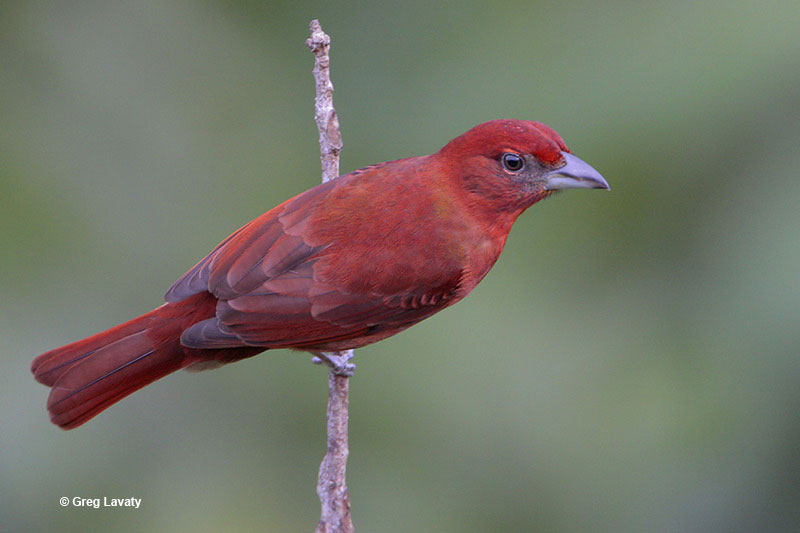The Hepatic Tanager (Piranga flava) is known for their sweet-sounding carol! They get their name from the male’s gray-red upper parts.
The term “hepatic” refers to the liver, and “flava,” the scientific term for this bird, refers to the female’s darker yellow plumage.
Hepatic Tanagers can be found in the U.S. during their breeding season and year-round in Mexico, Central America, and South America.
On this page
Identification
The Hepatic Tanager is smaller than an American Robin but larger than a Hermit Thrush. Both sexes are similar in size; they have a length of 3.5 to 7.9 inches, can weigh anywhere from 0.8 to 1.7 ounces, and have a wingspan of 12.6 inches.
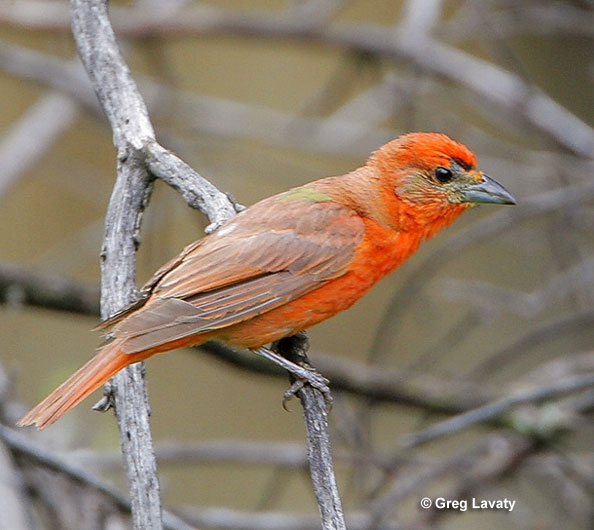
Fale Hepatic Tanagers are reddish below, grayish brick-red on their upper parts, and have grayish ear patches. Female Hepatic Tanagers are yellowish below, olive-yellow on their upper parts, and have dusky ear patches.
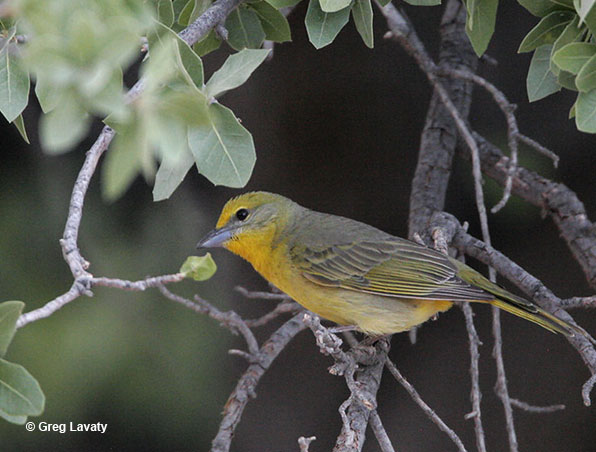
Juvenile Hepatic Tanagers are buffy on their underparts, olive-gray on their upper parts, and have light streaks throughout. Immature Hepatic Tanagers look similar to adult females but are duller. They all have dark legs and bills.
Ornithologists recognize 15 subspecies of Hepatic Tanagers. Only two of these subspecies inhabit the U.S. Hepatica mainly inhabits southwestern New Mexico and Arizona. The more brightly colored, smaller dextra can be found in western Texas and New Mexico. The other subspecies inhabit South and Central America.
Food
A Hepatic Tanagers diet mainly consists of spiders and insects. They mostly consume caterpillars, spiders, moths, bees, butterflies, grasshoppers, and ants.
They’ve also been known to consume small fruits like small grapes and cherries, small seeds, nectar, and flowers. These birds will move slowly through large shrubs and trees in search of insects and berries.
They will glean or pluck their meal with their bill when they find what they’re looking for.
Hepatic Tanagers will often start low in a shrub or tree and make their way up. If an insect flees, it’s likely that the bird will pursue it in flight. This species of bird often feeds in groups or pairs.
If there are homes near forests, it’s not uncommon to see these birds eat from jelly and suet feeders, which is a wonderful sight!
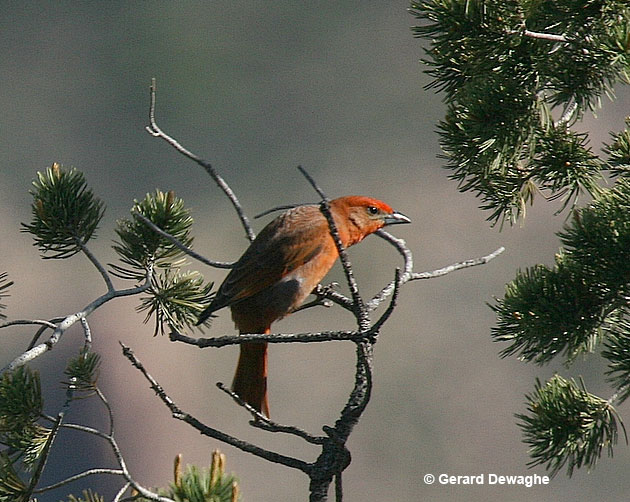
Nesting and Eggs
Hepatic Tanagers will almost always build their nest at the end of a tree branch in a fork. Nests can be anywhere from 15 to 50 feet above the ground, but the average height is 30 feet.
The female Hepatic Tanager is the one that builds the nest, but she does get some help from the male. The nest is an almost flat, broad cup of twigs, plant fibers, and grasses lined with flowers, grasses, moss, pine needles, and hair.
Clutch size can be anywhere from 3 to 5 eggs. Hepatic Tanagers generally have one brood per breeding season.
Eggs are usually a bluish-green and are speckled with purple or brown. The speckles are usually concentrated around the large end of the egg.
Current Situation
In the U.S., Hepatic Tanagers breed in open woodlands. These habitats occur in the higher elevations of Southwestern states. These birds prefer to breed in the forest canopy, which is usually partly open with an understory that is somewhat open instead of heavily vegetated.
During their migration, Hepatic Tanagers will use similar habitats as well as deciduous habitats at lower elevations along rivers. In desert habitats, migrants often appear in vegetation-rich habitats, like farmsteads—most U.S. populations most likely winter in Mexico, where they frequent many habitats like lowland thorn scrub.
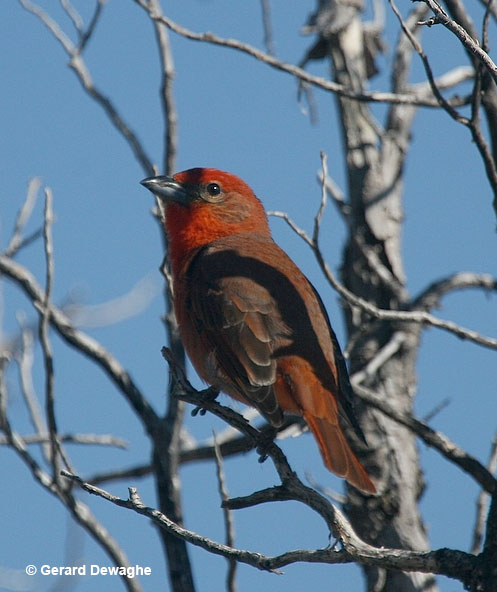
South of the United States, these birds are less picky with the habitats they choose. They can be found in forested environments, all the way from mountain forests to sea level.
Hepatic Tanager populations increased by 1.3% per year between the late 1960s and 2015. During that same time, the range for this species expanded. They reached southeastern California, southeastern Colorado, and southern Nevada.
Their population is increasing, and on the IUCN Red List, they are marked as a species of low concern.
However, that doesn’t mean these birds aren’t at risk. Habitat loss caused by fire, overgrazing, timber extraction, and drought has limited this species’ population. Additionally, deforestation in their wintering range can pose a severe problem.
Facts
- In South and Central America, there are 300 plus species of tanagers that are not related to the 4 species in Canada and the United States, even though they have the same name! These 4 species, the Scarlet, Hepatic, Summer, and Western—are a part of the Cardinalidae family, including Rose-breasted Grosbeaks and Northern Cardinals.
- Hepatic Tanager Parents and their nestlings will sing sweetly to each other.
- Even though the Hepatic Tanager has the most restricted range of tanagers in the U.S., it is the most widespread member of its genus. It has a breeding range from breeds from Argentina up to the Southwestern United States.
- There are only 5 species of Tanagers in the United States, and the Hepatic Tanager is one of them.
- The Hepatic Tanager has not been studied much. As of the year 2002, only 106 birds had been banded in the U.S. Out of those 106 birds; only one had ever been recovered.
Similar Species
The Hepatic Tanager has features that are similar to other bird species. Here are some similar species:
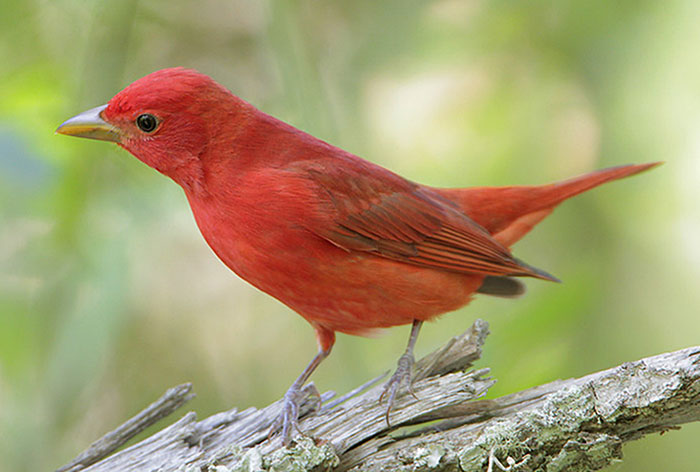
Summer Tanager
Hepatic Tangers are less bright than Summer Tanagers. Additionally, adult male Hepatic Tanagers have grayish cheeks, while adult male Summer Tanagers do not.
Female Hepatic Tanagers are not as yellow as female Summer Tanagers. Also, female Hepatic Tanagers have dark bills, while Summer Tanagers have pinkish bills.
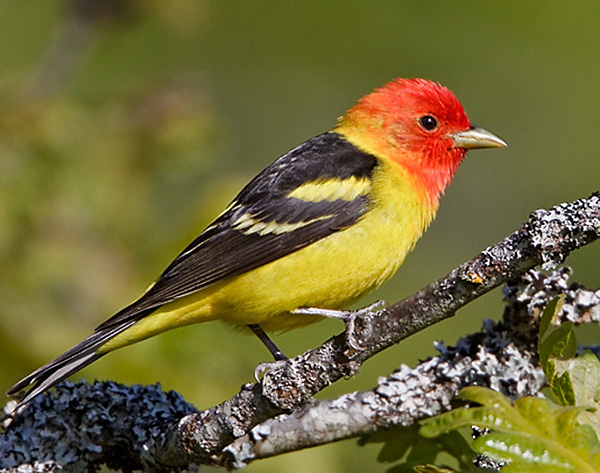
Western Tanager
Female Hepatic Tanagers have lighter wings and backs than female Western Tanagers.
Additionally, female Western Tanagers have 2 wing bars, while female Hepatic Tanagers do not.
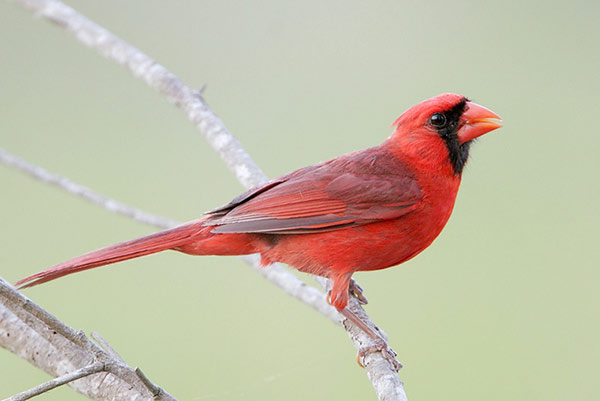
Northern Cardinal
Hepatic Tanagers lack the thick, conical bill, crest, and black face that male Northern Cardinals have.
Female Northern Cardinals have the same crest and thick-conical bills that the males have but are mainly brown with red highlights.
Female Hepatic Tanagers are mostly yellow.
Frequently Asked Questions
Why is it called a Hepatic Tanager?
Hepatic Tanagers get their name from the male’s gray-red upper parts. The term “hepatic” refers to the liver, and “flava,” the scientific term for this bird, refers to the female’s darker yellow plumage.
What is the difference between Hepatic and Summer Tanager?
Hepatic Tangers are not as bright as Summer Tanagers. Additionally, adult male Hepatic Tanagers have grayish cheeks, while adult male Summer Tanagers do not. Likewise, female Hepatic Tanagers are not as yellow as female Summer Tanagers. Also, female Hepatic Tanagers have dark bills, while Summer Tanagers have pinkish bills.
What does a Hepatic Tanager look like?
Adult male Hepatic Tanagers are reddish below, grayish brick-red on their upper parts, and have grayish ear patches. Adult female Hepatic Tanagers are yellowish below, olive-yellow on their upper parts, and have dusky ear patches.
What do Hepatic Tanagers eat?
A Hepatic Tanagers diet mainly consists of spiders and insects. However, they’ve also been known to consume small fruits like small grapes and cherries, small seeds, nectar, and flowers.

